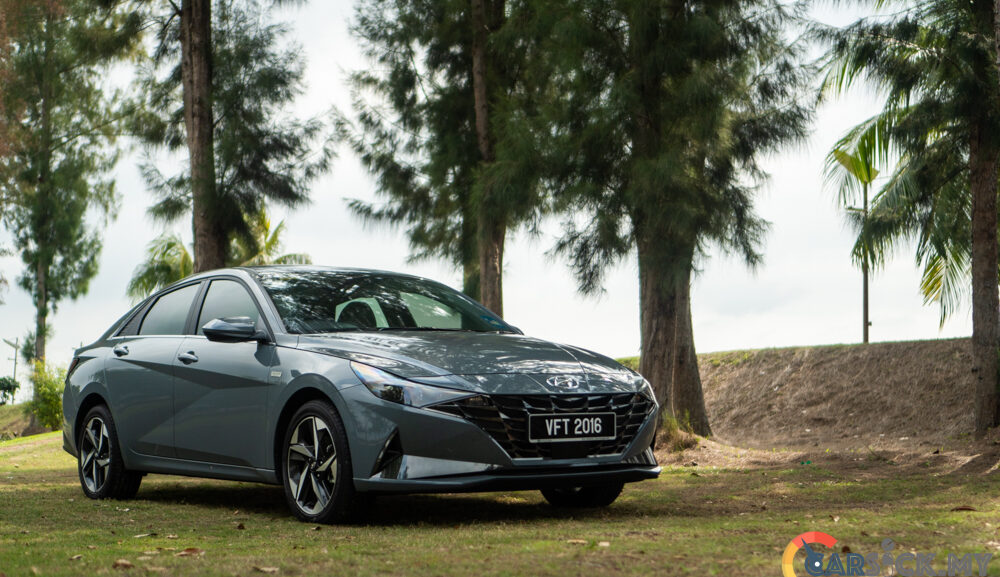Recently, Hyundai allow us to review the latest 7th generation Hyundai Elantra. The new Elantra was launched back in December 2020, and I was eager to try the car out as the international review for it was mostly positive. On top of that, the new Elantra have been winning awards in some of these countries, so let’s take a closer look.
At 1st glance, the Hyundai Elantra comes with a very sporty exterior. The Elantra features Hyundai’s latest Parametric design language. The new design language emphasizes on the strong lines and sharp edges around the car, and it made the car looks very futuristic, and it also reminds me of a certain supercar brand as well. 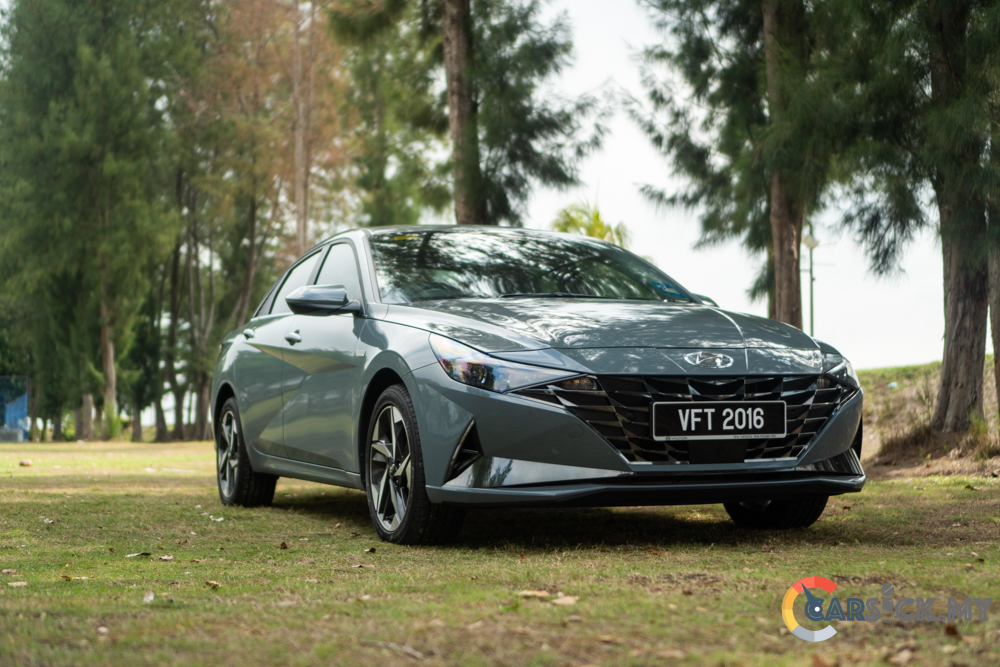
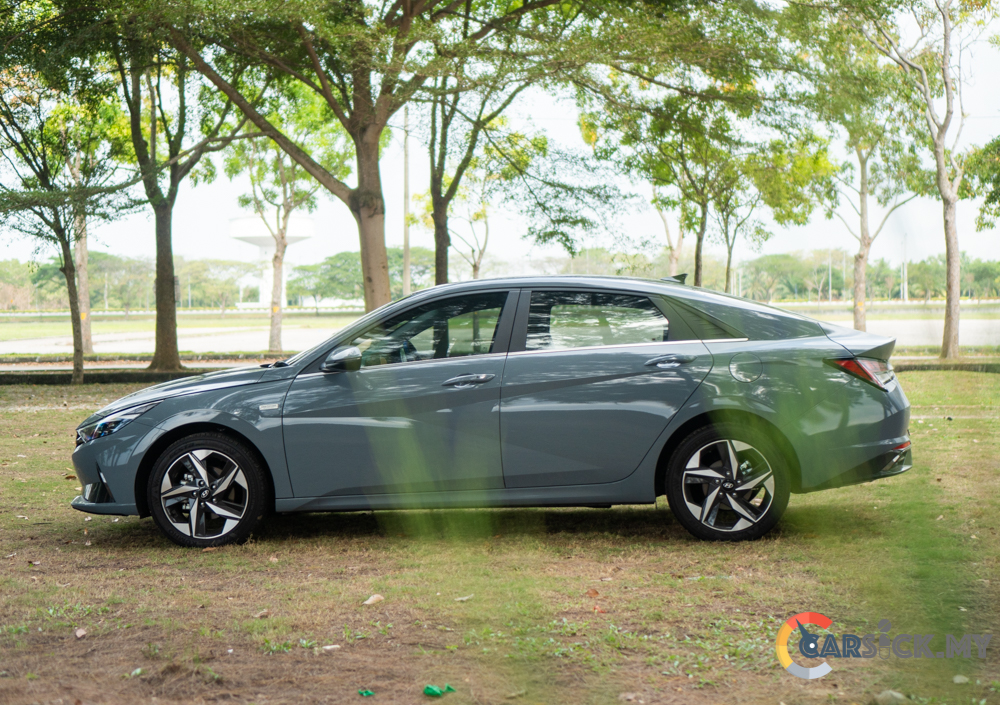
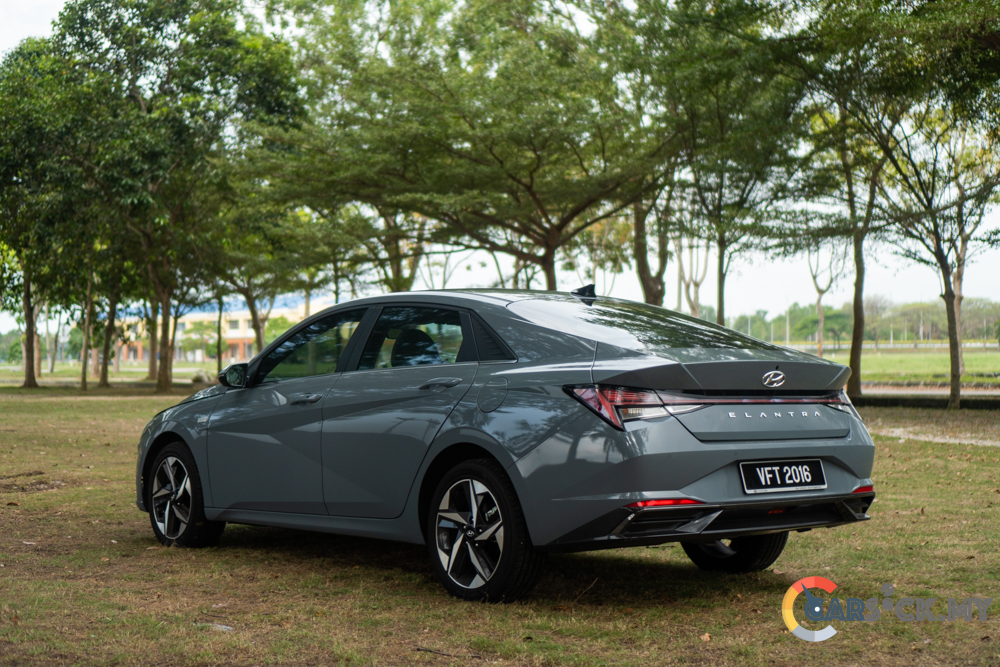
Looking around, the part that really attracts me are the taillights, it spans across the whole rear of the car. At night, when the taillights are switch on, it creates a H-pattern that looks very upmarket. Continue with illumination, the Elantra comes with full LED headlights with auto high beam that shines bright on dark roads. One downside about the headlights would be the lack of auto headlight leveling system. 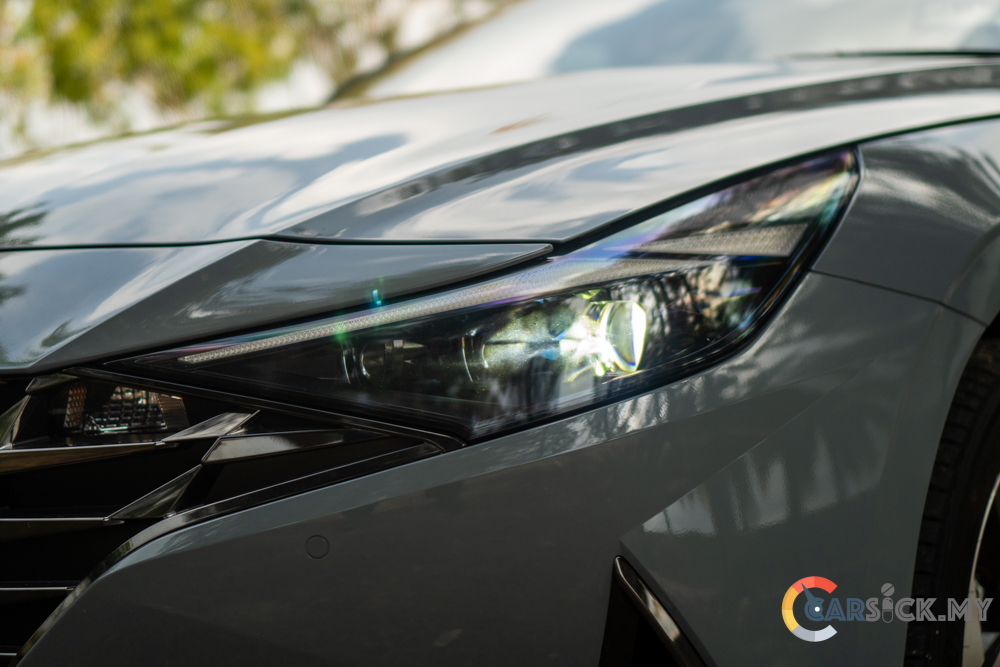
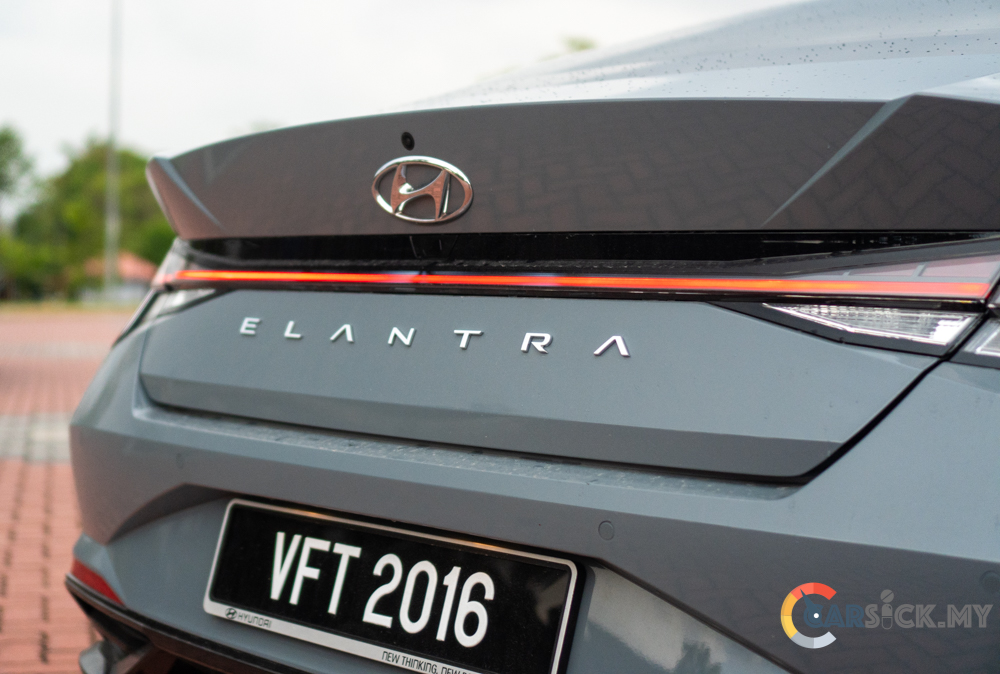
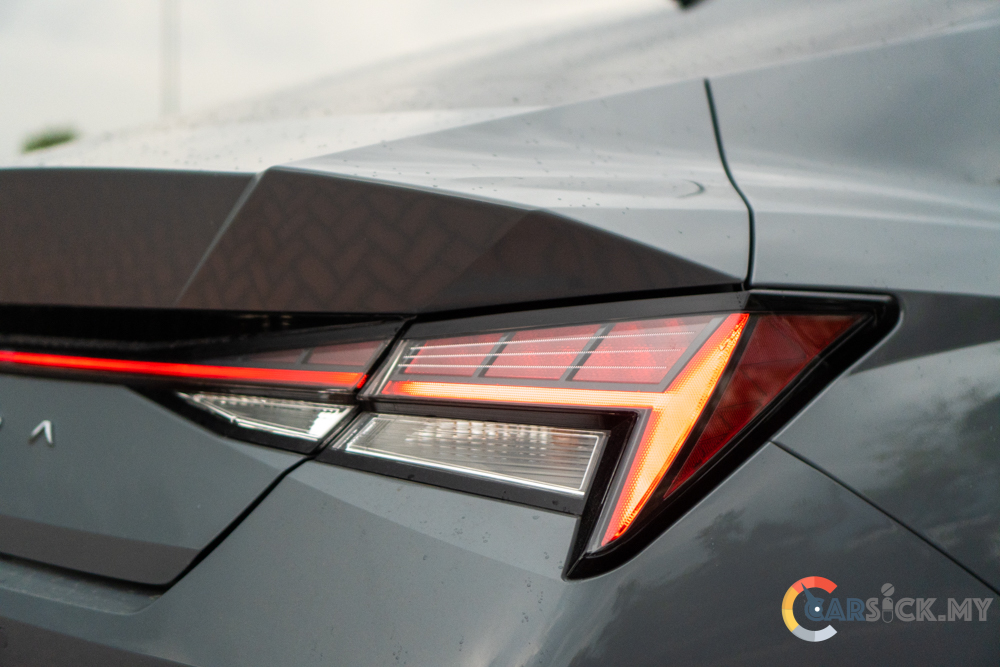
As for the rims and tyres, you do get 17-inch rims wrapped in 225/45 size tyres, it provides sufficient grip to keep the car planted on the ground. On the other hand, the 17-inch rims do look a little small on the Elantra, as the Elantra do come with larger rims fitted on the performance models. Even with 17-inch rims, the Elantra do have quite a tall ground clearance. This helps prevent the Elantra from scraping the lower portion of the bumper even it has a low hood line. 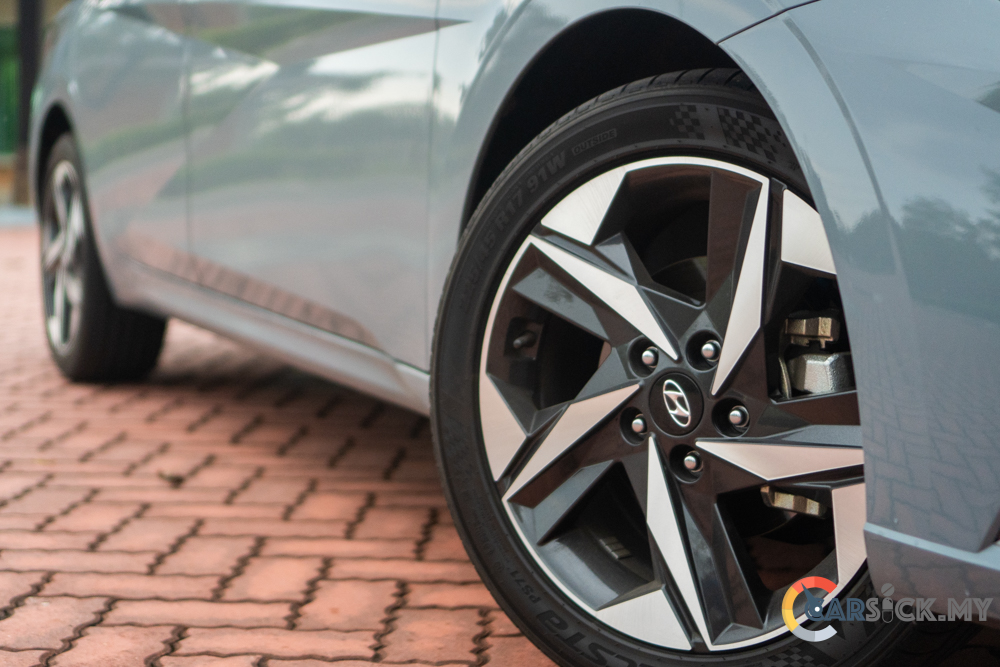
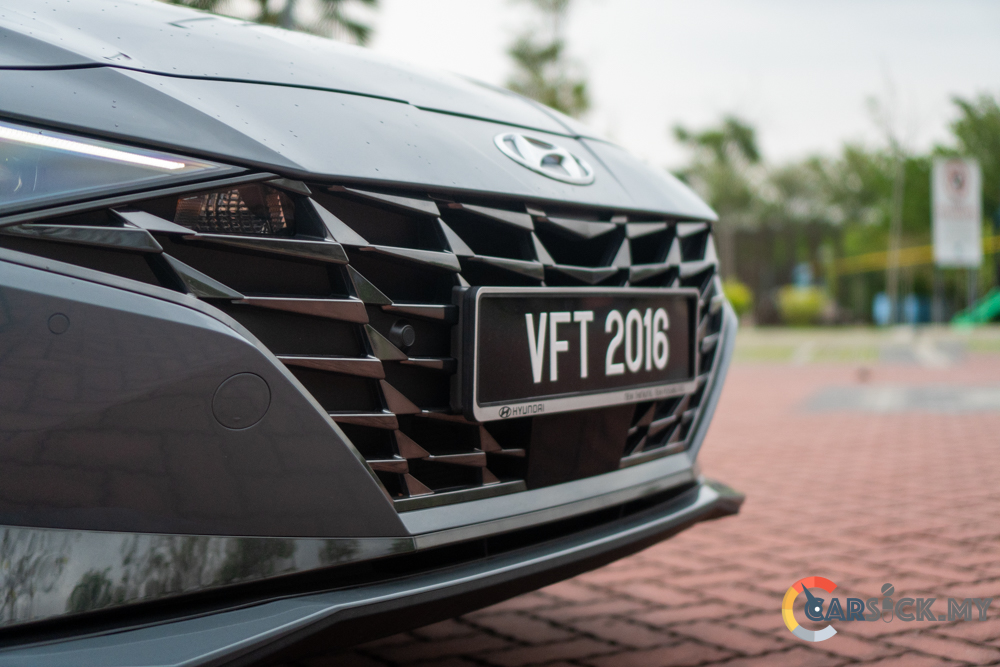
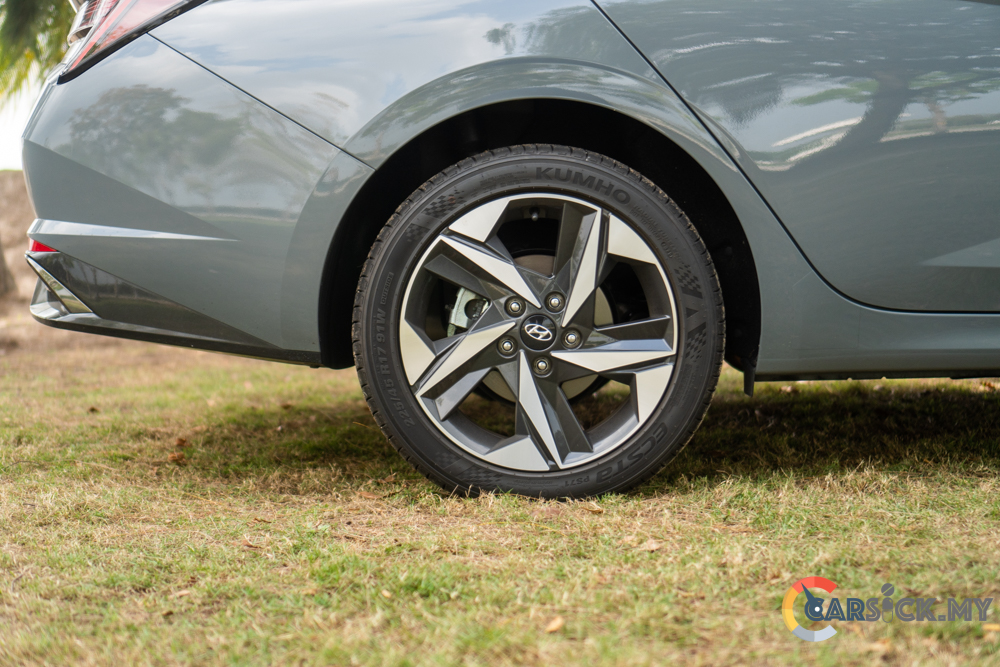
On the inside, you’re greeted by a dashboard which looks like a cockpit, very driver focus. The dash comes in a dual tone design with the top portion being black in colour while the grey dominated the bottom. Piano black plastics also made its way on to the dashboard and the center-console. Personally, I like how it looks, but piano black plastics do attracts fingerprints and scratches easily, and let’s not forget the dust particles that gathers on the piano black plastics after a while. With the mixture of different texture plastics, Hyundai actually created a rather premium looking dashboard overall.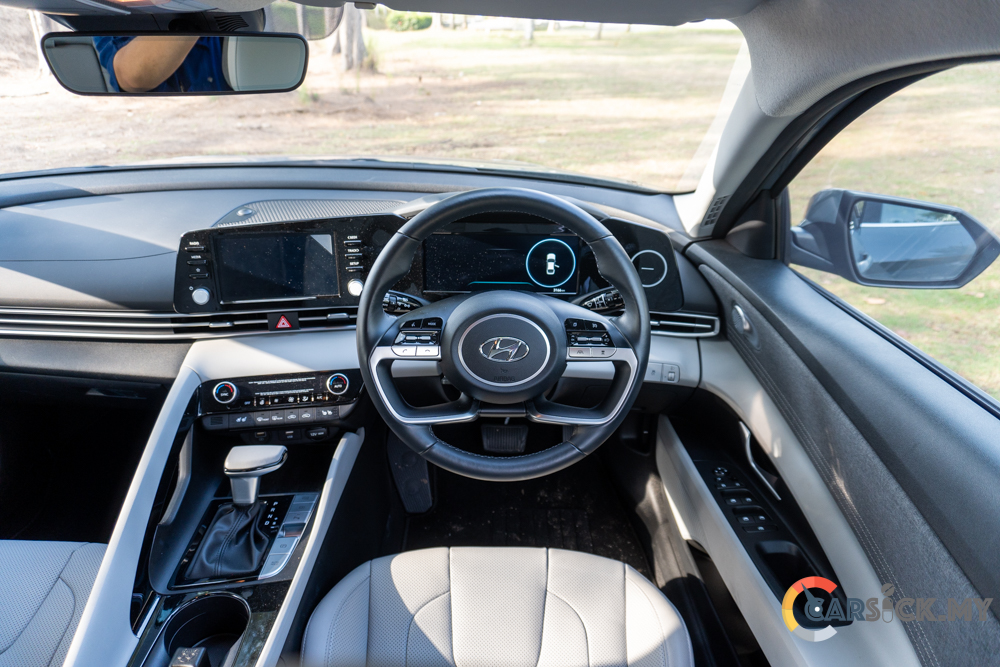
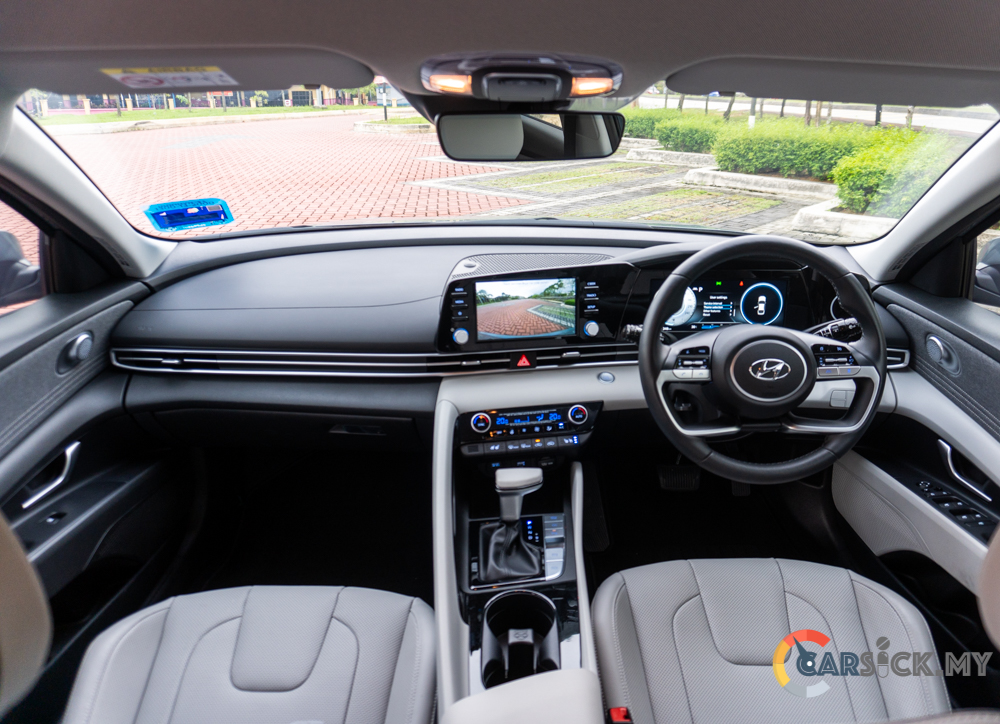
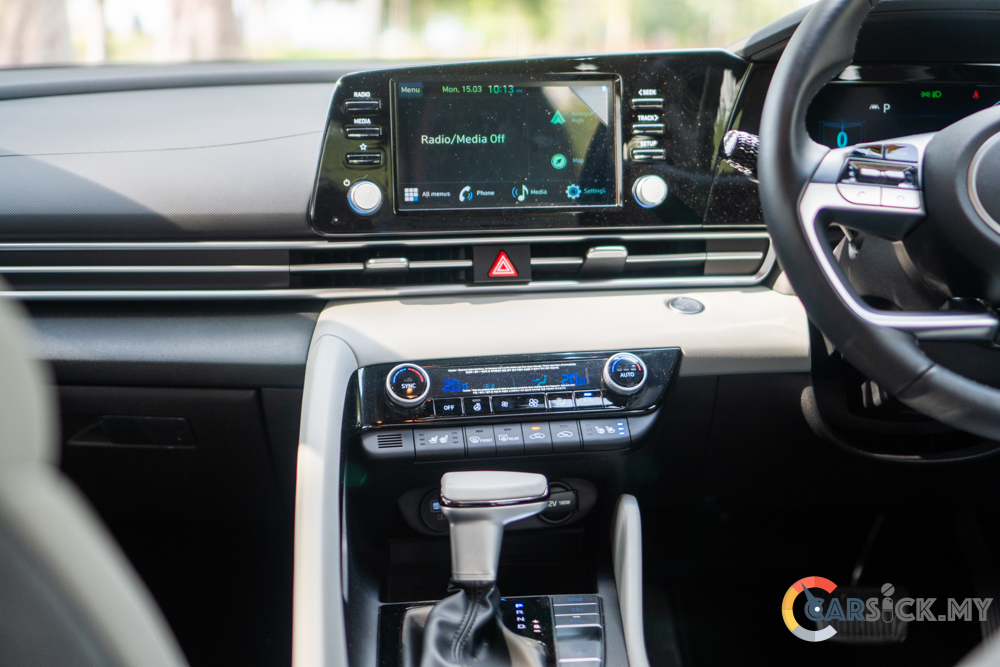
For me, the highlight of the dashboard is the availability of wireless Android Auto. This is due to wireless android auto is a fairly new system, and many manufacturers have not feature on their cars yet. The infotainment system is hooked up to a 6 speaker sound setup which pumps out decent audio quality. This is partly thanks to the very silent interior found on the Elantra. On idling, you barely can even notice the engine is running, but on higher rev, you do hear the engine noise starts creeping in. 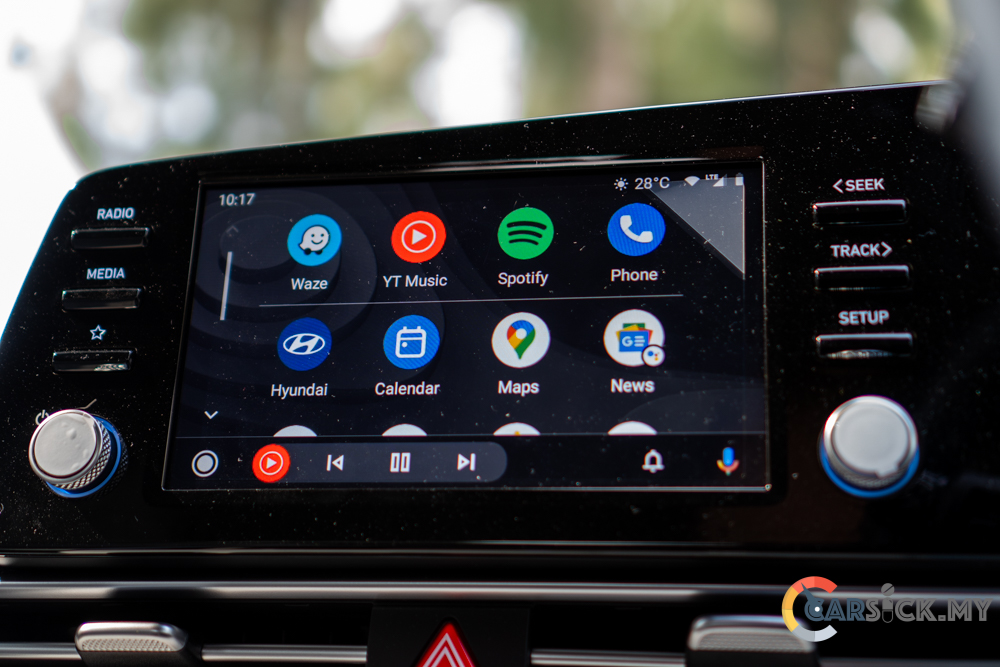
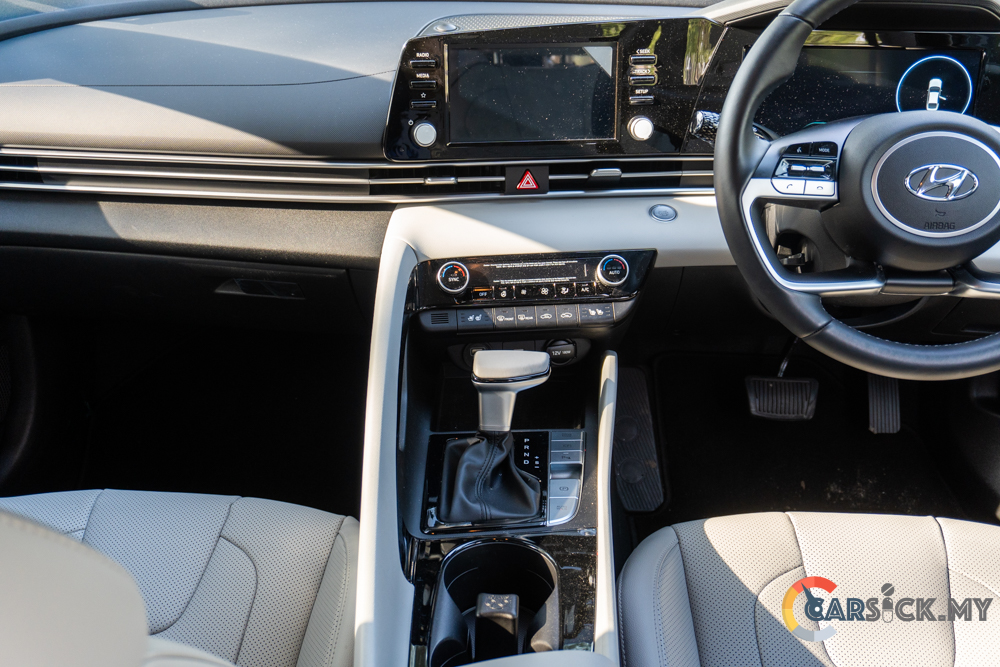
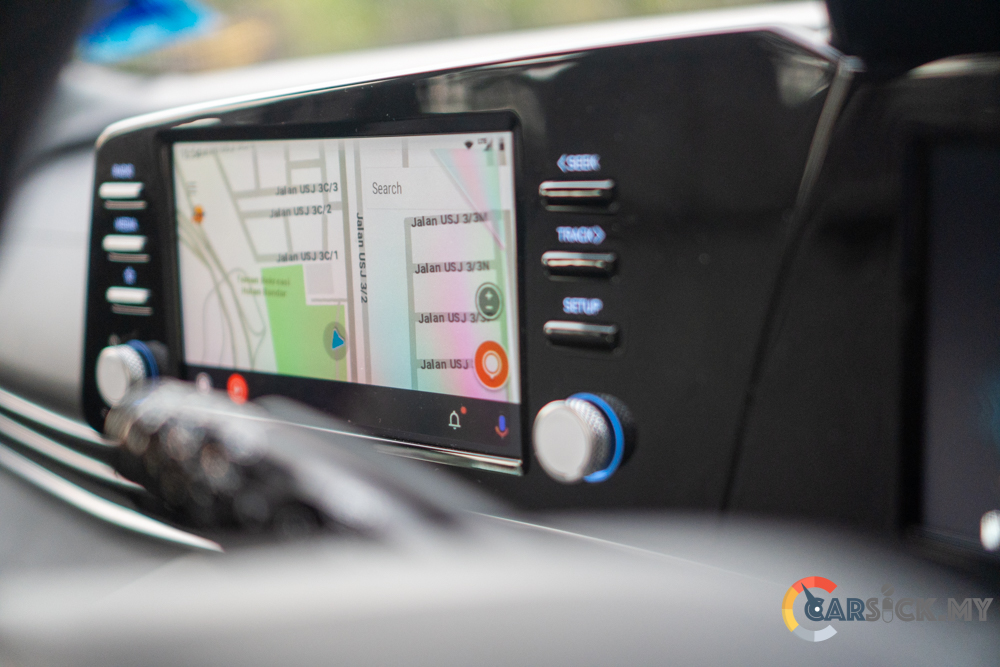
As for the seats, the grey leather front seats are very supportive with plenty of adjustments, it helps the driver to get into a comfortable seating position with ease. These seats comes with large side bolsters to keep the driver in place during spirited driving. Furthermore, the seat cooling helps the driver to cool down under our hot and humid weather. Moving to the back, the Elantra has decent legroom and headroom with the driver seat set to my driving position. The thing that could be improve at the rear is the thigh support for rear passengers. Behind the rear passengers, the 474L cargo space looks way bigger than it is. 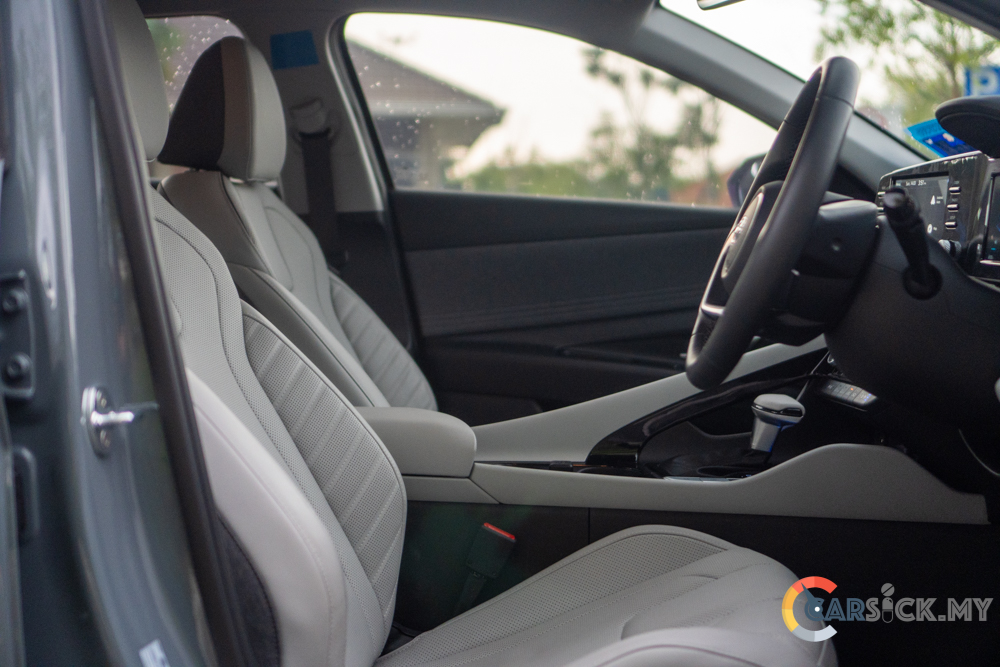
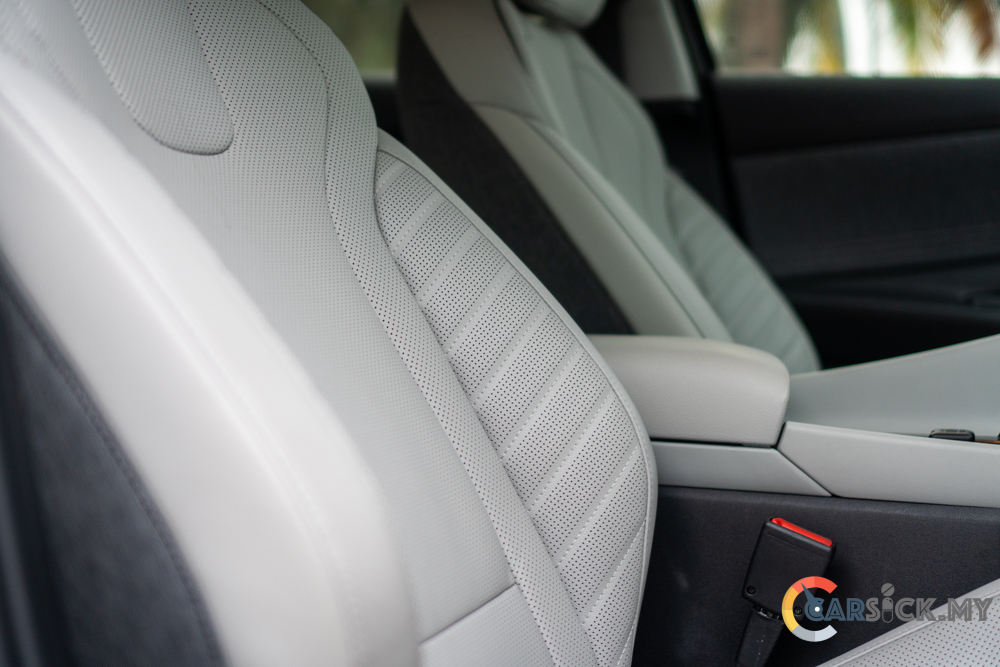
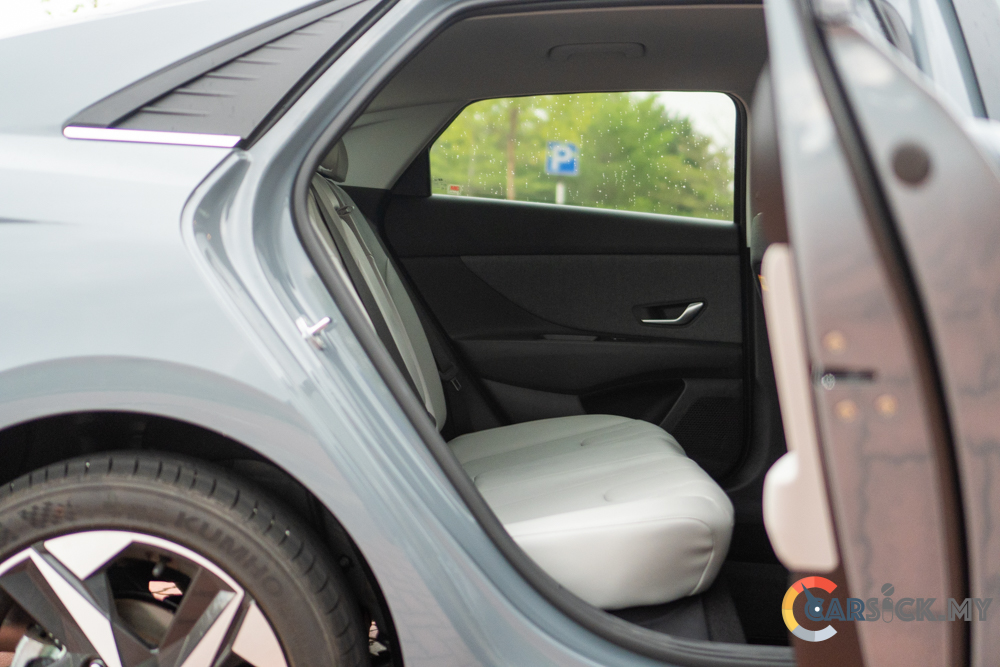
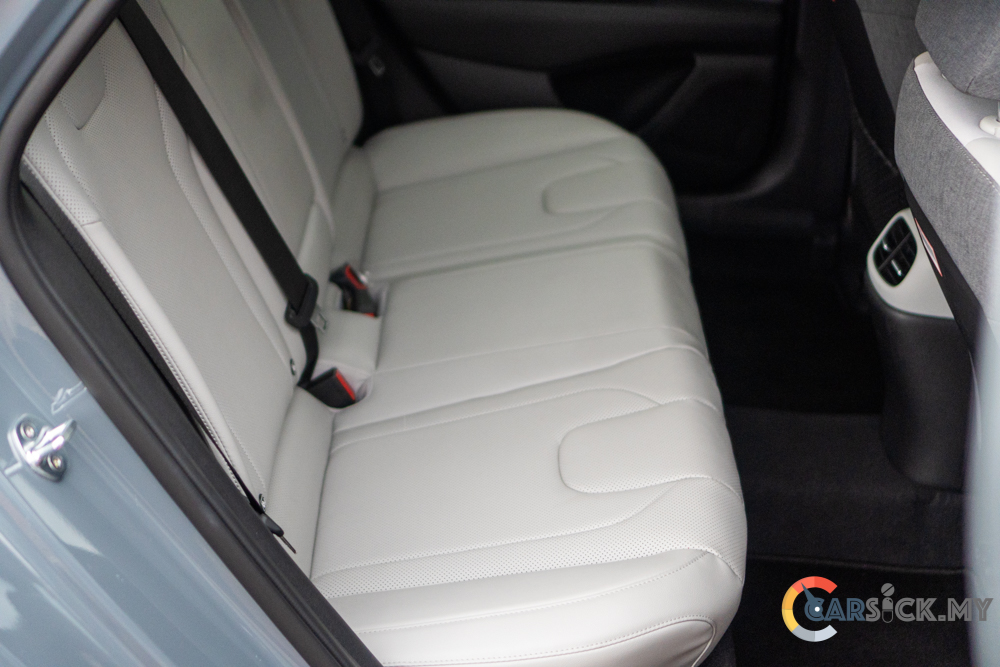
In the powertrain department, this Elantra comes with a brand new 1.6L smart stream engine. This new engine develops around 123PS and 154 Nm of torque, and power is sent to the front wheels through Hyundai’s own Intelligent Variable Transmission, also known as IVT. While driving, you can feel that this engine has strong mid band torque, it helps the Elantra to keep up with traffic easily. As long as you’re not planning to drive the car like a sports car, I don’t think you would find the Elantra underpower. 
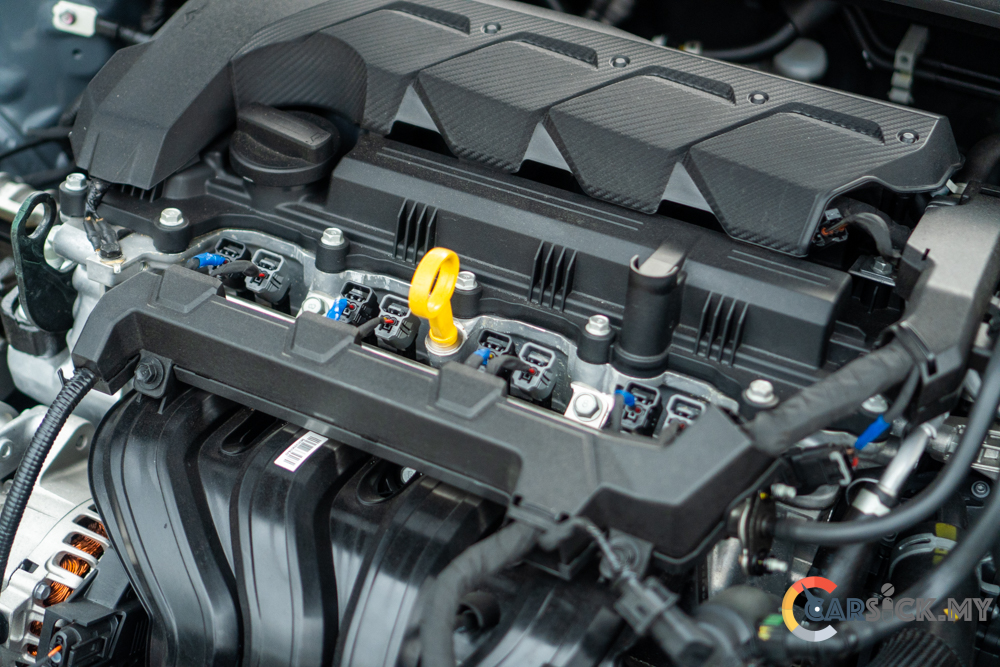
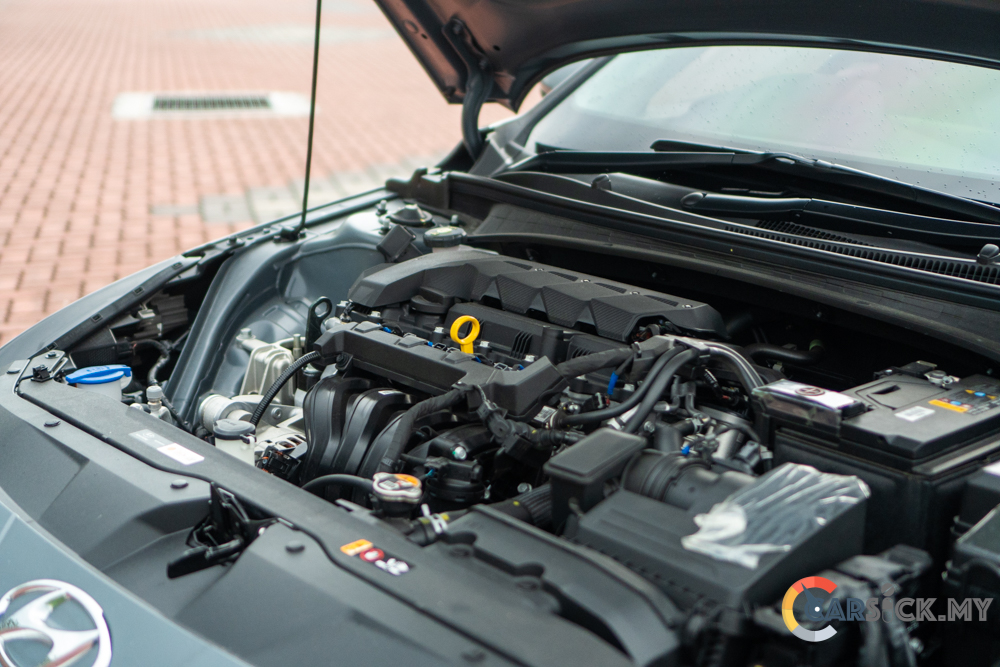
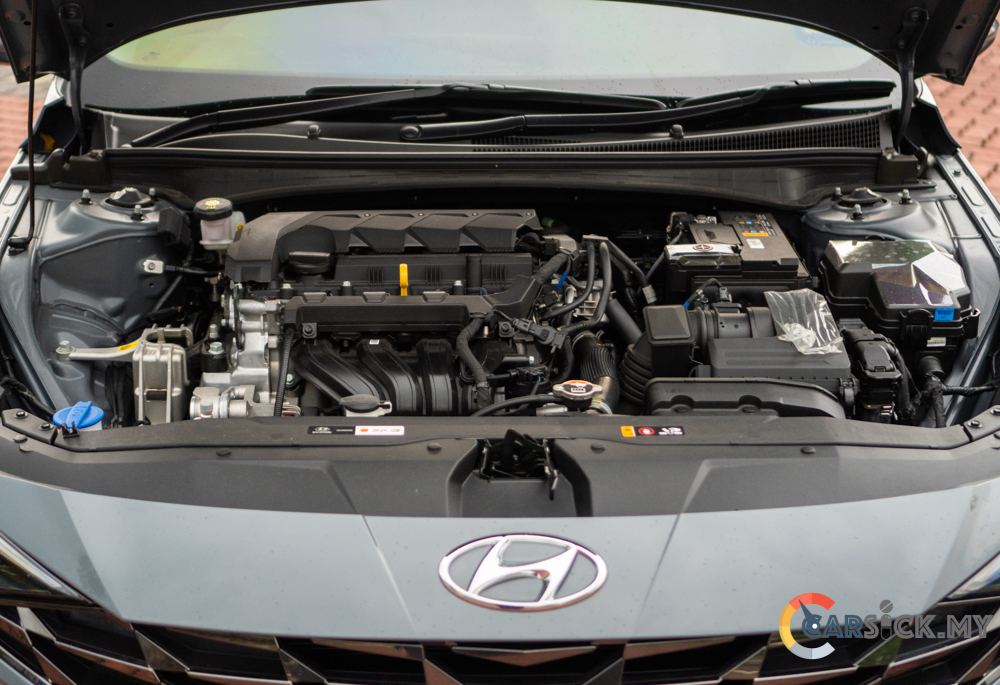
Personally, I wasn’t a fan of CVTs in general, but I was really surprise that Hyundai manage to iron out the flaws found on regular CVTs. On acceleration, the IVT will react just like any regular automatic transmission, in turn, it also reduces the rubber band effect. And of course, no CVT whine are evident, and the Gear change are generally smooth. With this powertrain setup, my time with the Elantra return a healthy fuel consumption figure of 7.5L/100km during the past few days of driving.
Going over uneven roads, the suspension did a good job in soaking up bumps, and it does feel like a D-segment sedan. This translate to a very comfortable ride over long distance driving. Even though the suspension is on the softer side, body roll is very well manage to allow the driver to corner at quite a decent speed. Speaking about cornering, the steering wheel feedback can be a little vague, but the steering is still very predictable and gives you confident while cornering. At lower speeds, the steering is light enough to allow the driver to manoeuvre around tight spaces with ease. 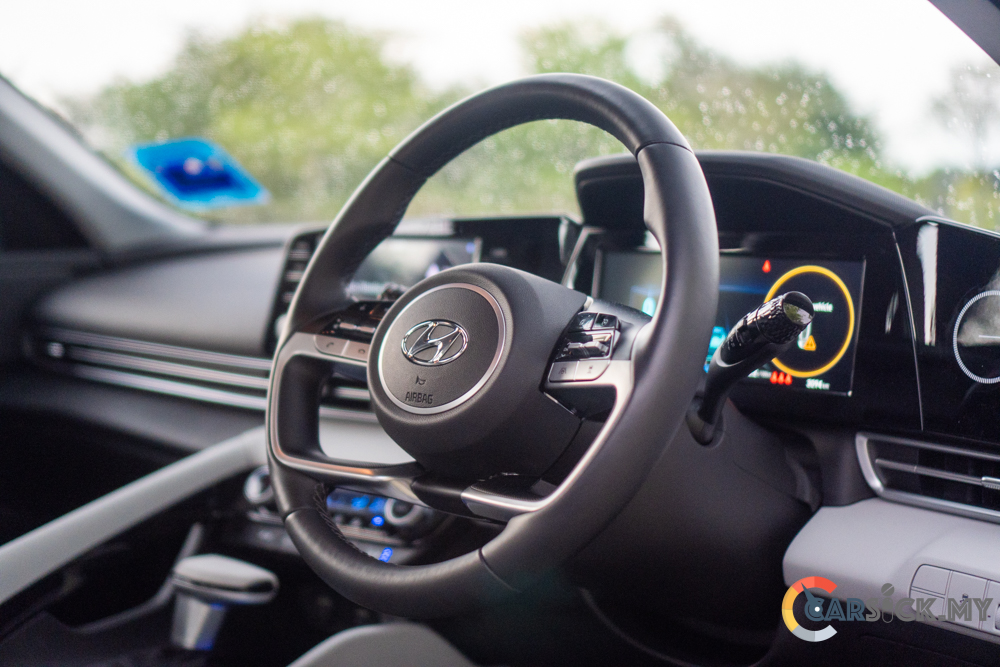
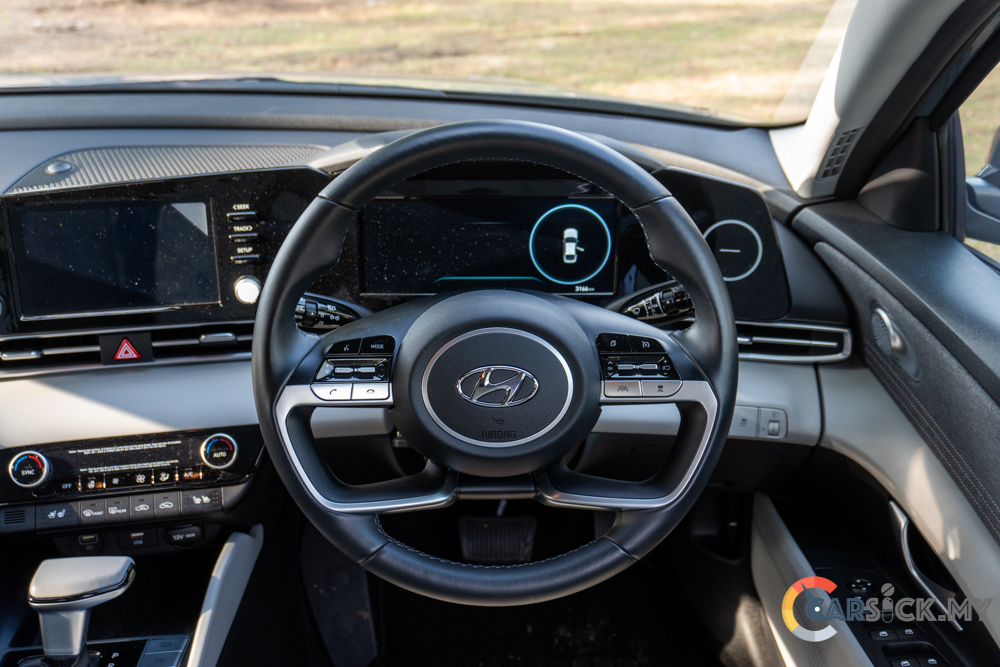
Safety wise, the Elantra comes with a whole host of Hyundai Smart Sense safety system. The Hyundai Smart Sense system comes with Lane Keep Assist (LKA), and Lane Following Assist (LFA), Smart Cruise Control (SCC) with stop and go function, Forward Collision Avoidance Assist (FCA), Forward Collision Avoidance Assist Junction (FCA-JT), Blind Spot Collision Avoidance Assist (BCA), Rear Occupant Alert (ROA), Rear Cross Collision Avoidance Assist (RCCA), Safe Exit Warning (SEW), and Driver Attention Warning (DAW), with Leading Vehicle Departure Alert (LVDA)
The Hyundai Smart Sense safety system works well, but I find that there are some improvement can be made in order to make it more user friendly. For instance, Hyundai can include physical buttons to switch on and off for some of the safety system. As for now, you’ll have to enter into the sub-menu inside the instrument cluster just to toggle it. 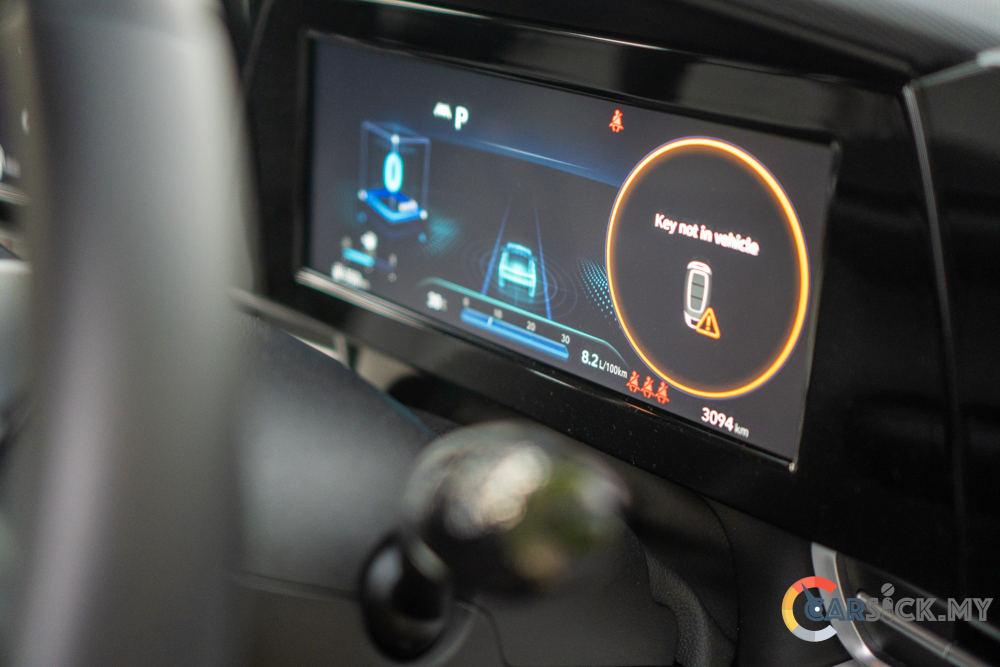

In conclusion, I find that the new Hyundai Elantra is almost the perfect daily driver. I am generally impress with how the Hyundai Elantra handle itself throughout the test drive. For RM158,888, its still quite a steep price for those who never tested the car before, but the price is justifiable after you’ve experience the car. If you’re looking for a C-segment sedan, I urge you to head over to your nearest Hyundai showroom to test the car.
Check out the full Photo Gallery here
